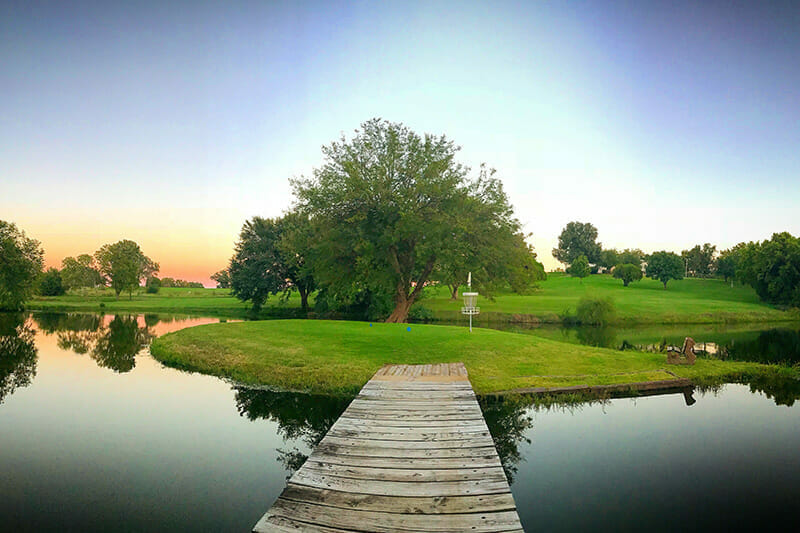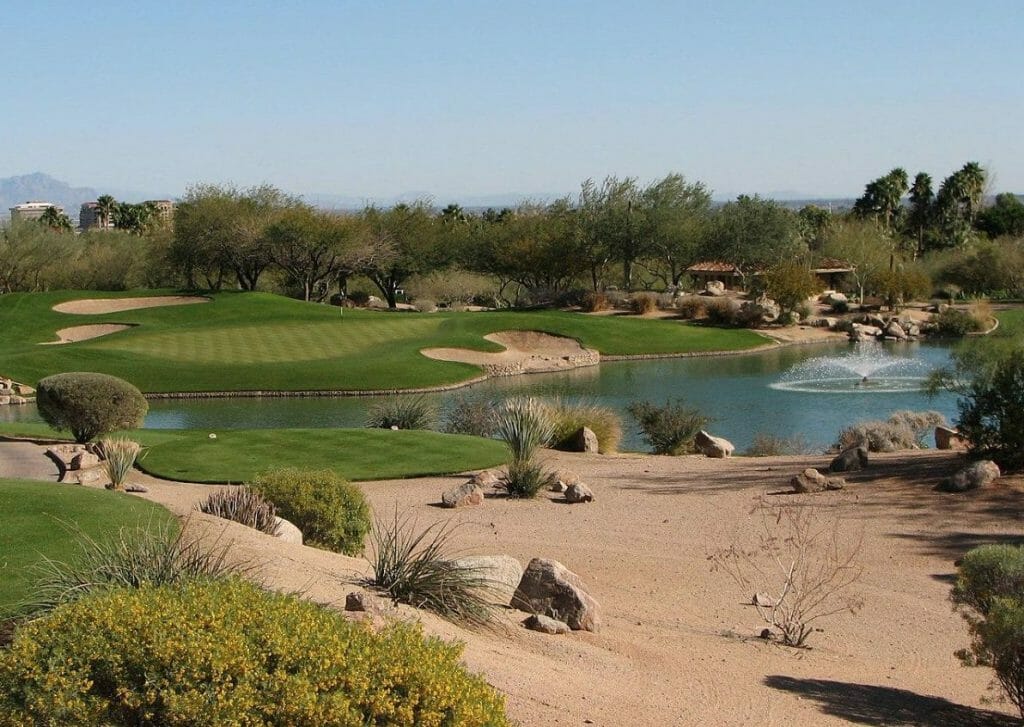String in the middle of an open field just doesn't look right.
May 11, 2023 by Douglas Tyas in Opinion with 0 comments

I step up to the tee and my heart starts pounding. A water carry is in front of me. I must execute my shot, or I can kiss my favorite driver goodbye. I need to give it enough power. These thoughts run through my head, changing a routine shot into the most challenging one on the course. The danger of the hole is evident, and it tests my mental game.
But when I step up to a hole with artificial out-of-bounds marked by a simple string, I don’t see any danger. Of course I know that my score card will suffer if I land on the wrong side of the line, but all I see is an arbitrary line in the grass. There is no danger if my disc lands in the middle of a nicely mowed field, even if it is marked as OB. The danger I feel when facing a water carry is also present when I am playing in the woods. If my disc hits a tree and kicks hard into the thick blackberries of the Pacific Northwest, I instantly feel my mistake. But when I miss a mando in the middle of a field, I just pick up my disc and stroll to the dropzone.
Our perception of OB is far more complex than the rules of disc golf tell us. According to the rules, the repercussions of landing in an OB water hazard and landing on the wrong side of a painted OB line are the same; however, our understanding of the natural features of a disc golf course convince us otherwise. This mental leap creates discontinuity that takes away from the professionalism of the game.
The Push for Spectator-Friendly Courses
As the DGPT has grown, there has been a push to host tour events at courses that allow for more spectators and better video coverage. This typically results in the use of courses that have fewer trees and more artificial OB. Out-of-bounds marked by stakes, flags, paint, or string is an easy way to create difficulty and scoring separation on holes that would otherwise be too easy for the pros. However, we must acknowledge that artificial OB can damage the fan experience of a course.
Water hazards and thick rough intuitively communicate the danger on a hole to the audience. When I see a player step up to the tee with these dangers in front of them, I understand what a good shot is without the commentators needing to tell me. But while watching DGN, I have often witnessed a disc land on nicely manicured grass and assumed it was a good shot, only to hear the commentators say the disc is OB. When I’ve shown disc golf coverage to my friends, they are often confused by these situations – they understand why OB is important, but they still feel conflicted. It seems unprofessional for an area that looks like the fairway to be arbitrarily labeled as OB simply to add difficulty.
This arbitrary feeling is emphasized on live coverage. Post-production does a good job of communicating which areas are out of bounds with drone flyovers and commentary before each hole. When I see a shot land in an OB area that looks like it should be the fairway, I already know better because of the structure of the coverage. However, drone flyovers are often shown after the tee shots of the lead card during live coverage. We see multiple players attack the hole before the commentators can explain which areas should be avoided.
In traditional golf, viewers can look at where a shot lands and instantly know whether it was good or bad. The courses are manicured so that every fairway looks the same. This visual consistency clearly communicates where drives should land. If a golf course designer decided that some of the fairways were going to look like greens, or the rough on some holes was going to look like the fairways, viewers would obviously be confused.
This visual inconsistency is everywhere on disc golf courses. It is very common for tournaments to spray paint a line through a nicely mowed field. We see mandatories slapped on trees everywhere across the tour, not because of safety concerns but to make the hole more difficult. There’s often no way to know from just looking at a hole what is safe and what is not.
Intuitive OB
Professional disc golf courses need to address this visual discontinuity by creating artificial OB that is intuitively dangerous. The out-of-bounds areas need to communicate to viewers that they are distinct from the fairway. Unfortunately, adding water hazards everywhere isn’t feasible on most courses for logistical or financial reasons, so courses need to consider alternative approaches.
As the DGPT moves from public parks to private disc golf properties, opportunities open up for creative landscaping designed around the courses. These private properties can plant trees, install paths, and build hazards for the express purpose of improving the disc golf course. This opens many doors for developing intuitively dangerous OB areas while remaining spectator friendly.
One approach, taken by courses like Fox Run Meadows and Blue Lake, is to allow OB areas to become overgrown. Even if someone has never seen disc golf, they know the goal is to land in the short-cut grass. Everyone can understand that a disc falling out of view into tall grass is bad. But overgrown areas can also restrict spectating. When I was at Blue Lake for the Portland Open, spectators sat as close to the OB line as possible. The larger clumps of wild roses and blackberries kept fans from being able to sit 10 feet off the fairway because they wouldn’t be able to see the action. The number of spectators who could fit on a hole was greatly restricted by the brush and often put spectators in the way of players’ shots.
There are many other ways that course designers can create OB that is visually distinct from the fairways without restricting spectating sightlines. With sand, dirt, gravel, or bark, course designers can create visual cues that communicate the location of OB hazards. Many traditional golf courses in desert locations have fairways of beautiful grass while the deep rough is a large sand trap. This contrast between the fairway and the rough creates a beautiful course that if implemented for disc golf would improve the spectator experience. While I would not be a fan of course designers creating difficulty exclusively using this style of OB, if combined with trees and other natural obstacles, designers could build a challenging and visually memorable experience.

The Future of Professional Courses
Professional disc golf has reached the level where many players can tour in an economically sustainable way. Events offer exciting spectator experiences, and both live and post-produced coverage are high quality. Courses have begun to move away from public properties to private venues that have the infrastructure to support these events.
To further professionalize and legitimize the sport, we need to integrate landscape design into courses. Our courses need to have visual continuity – they need to challenge players while clearly communicating to the audience where players should and should not throw. Making these landscape changes will not only improve the clarity of the course, it will also beautify them and draw in more fans than ever before.